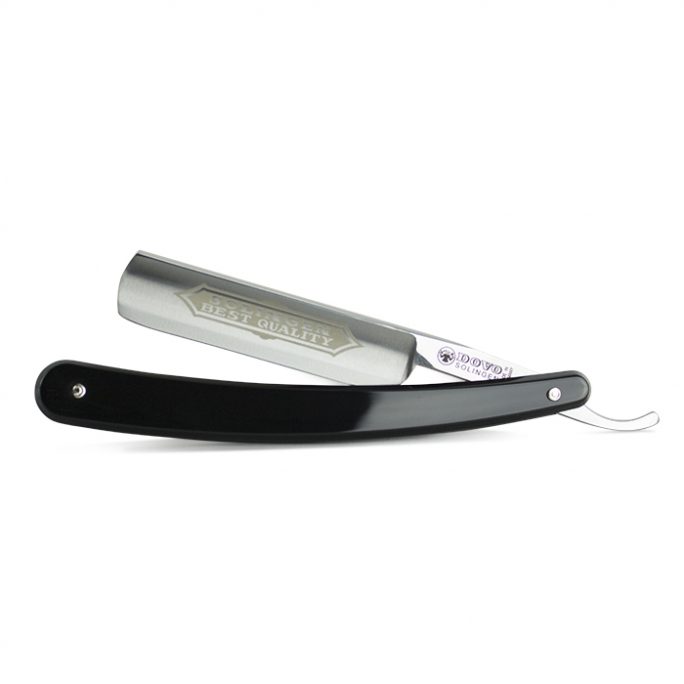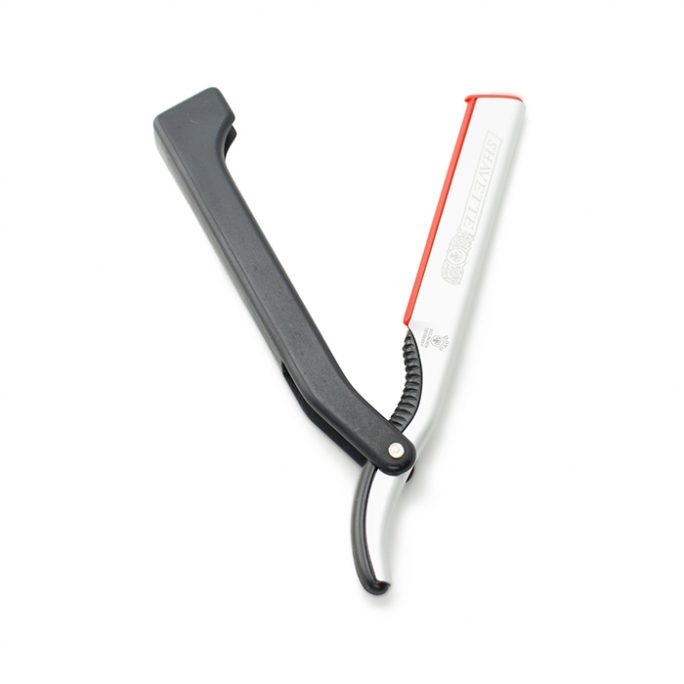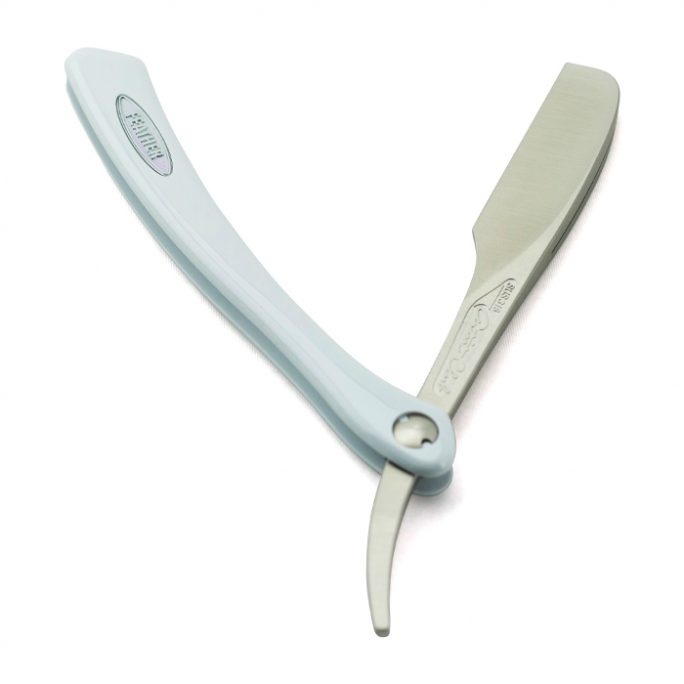Straight Razor
If you are new to straight razor shaving or are an experienced user, you will agree that there is something very satisfying about using this tool. Maybe it reminds men and women about the cave man era where people shaved with swords or knives. Or maybe the risk of holding an open blade against your jugular instead of playing it safe with a multi blade cartridge razor creates the excitement that people love. In either case, shaving with a straight razor is a journey that rewards those who want to put in the time in perfecting this art but could also hurt those wanting to get started quick without paying attention to the necessary steps. We will discuss the process of choosing a straight razor so you understand what is involved in choosing the right shaving tool for your grooming needs. If you still have questions after reading this guide, you are more than welcome to contact us directly for additional information.
Straight razors or straight edge razors come in a few different styles, shapes, sizes and brands. The very first decision people have to make is if they will choose a cartridge style straight razor, also called a shavette, or a traditional straight razor. Shavette’s use a disposable blade (usually 50mm long and 8.2mm height) and can be used about a half dozen times before needing to be replaced. The shavette style razor is great for beginners who want to experiment with straight razor shaving but don’t want to get into a traditional straight right away. Most choose the shavette style to start because the learning curve is a lot easier and it is generally less costly to get a shavette straight compared to a traditional straight.
A traditional straight razor definitely requires a little more skill to operate and should be used carefully after it has been sharpened (also referred to as honed). Most traditional straight razors come in 4/8, 5/8, 6/8 and 7/8th blade sizes. The most common and beginner blade size people start off with is the 5/8th size. After mastering this blade size, you can experiment with others to see if they provide a more unique shave for your needs. This is of course according to your beard growth as well.
Traditional straight razors are also differentiated by their blade grind. The common blade grinds include but are not limited to hollow, full hollow, extra hollow and half hollow. Most beginners do choose a full hollow blade grind, which are generally sharper than half hollow grinds. The general rules of thumb with blade grinds are the more the blade has been grinded, the thinner the blade that shaves your skin is thus making it sharper. As a beginner, shaving with a sharp blade is a good thing because you want the blade to slice the hair without pulling it and causing irritation or worse, cutting damage.
Many straight razors are considered pieces of art in addition to being a shaving tool. Many wet shaving fanatics have collections of different straights, which include both shavette’s and traditional straight razors.
At this stage, you have your straight razor out and are probably a little nervous about using it. Don’t worry, being nervous about using a straight razor is actually extremely common. No one gets giggly about putting a laser sharp knife against his or her skin so you are not alone! Depending on which type of straight you choose (shavette or traditional), you will always want to make sure your blade is super sharp. This involves putting in a new shavette blade or honing your traditional straight. By the way, if you don’t know how you hone your traditional straight, there are many tutorials available that will show you the appropriate way. You can also call us for some over the phone support!
As with any type of wet shave, you will want to make sure you use a pre-shave solution or at the bare minimum use a shaving cream/soap which builds a decent lather. Building lather could be difficult without a shaving brush so it is highly recommended to use a brush to achieve the perfect lather.
Once your face is filled with shaving solution, you will want to make sure your straight razor is warmed up from some hot water and ready to have a steady hand. As a beginner, it is not recommended to perform any up the grain (UTG) shaving passes due to the complexity of holding the blade angle correctly. You will want to only focus on and perfecting with the grain (WTG) passes with using a straight razor. Remember to use short, light passes and have the tool do the work instead of you pulling hard or forcing down the blade on your skin. When first starting out, it is common for the blade to skip your skin and miss areas of hair, which can seem patchy after you shave. This is why it is recommended that you shave with at least a couple passes (WTG) to ensure all the hair below your chin and face have been removed.
It is recommended to make sure your hands are always as dry as possible when using a straight razor to ensure there isn’t any slippage which could cause you to get severely hurt by your blade. On this note, it is worth mentioning that if you are late for work or in a hurry, maybe straight razor shaving isn’t the best option on those specific days. After all, who wants to show up to work with Edward Scissorhands cuts all over the face. J
Once you have carefully completed your straight razor shave, make sure to wash your face with cold water, which closes the pores. Also, don’t forget to apply your favorite aftershave to seal in your fresh straight razor shave. Happy shaving and good luck!
Showing all 4 results



